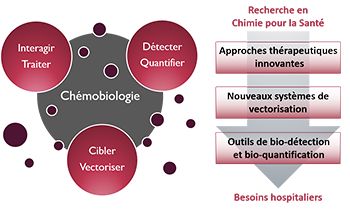Article
- Projet
-
-
Luc CHOISNARD,
- Titre
-
Urinary trans-anti-7,8,9,10-tetrahydroxy-7,8,9,10-tetrahydrobenzo(a) pyrene as the most relevant biomarker for assessing carcinogenic polycyclic aromatic hydrocarbons exposure
-
[Full paper
 ]
]
- Auteurs
- Damien Barbeau, Simon Lutier, Luc Choisnard, Marie Marques, Renaud Persoons, Anne Maitre
- Edition
- Environment International, 2018, 112, 147–155
- Année
- 2018
- Résumé
- Polycyclic aromatic hydrocarbons (PAH) are ubiquitous pollutants present as complex mixtures in the environment.
Among them, benzo(a)pyrene (BaP) is classified as carcinogenic to humans by the International
Agency of Research on Cancer. Taking into account all absorption ways, human biomonitoring allows PAH
exposure assessment, but biomarkers both specific to carcinogenic effect and sufficiently sensitive are lacking. In
this work, we proposed the urinary 7,8,9,10-tetrahydroxy-7,8,9,10-tetrahydrobenzo(a)pyrene (7,8,9,10-OHBaP)
stemming from hydrolysis of BaP-7,8-diol-9,10-epoxide, the ultimate carcinogenic BaP metabolite, as biomarker
of PAH exposure. A simple and highly sensitive analytical method, with a limit of quantification (LQ) reaching
0.06 pmol/L (0.02 ng/L), was described and validated. The relevance of urinary 7,8,9,10-OHBaP concentrations
adjustment by creatinine was demonstrated. In a group of 24 non-occupationally PAH exposed subjects, only
15% of 7,8,9,10-OHBaP levels was below the LQ and the last daily void has been found as the best sampling
time. Tobacco consumption had a significant positive effect on 7,8,9,10-OHBaP concentrations with a 90e
percentile equal to 0.05 nmole/mole creatinine (nmol/mol) and 0.03 nmol/mol for smokers and non-smokers,
respectively. In case of occupational PAH exposure, all the pre- and post-shift urinary 7,8,9,10-OHBaP levels of 7
non-smoking workers in a prebaked electrodes production plant were above the LQ. Concentrations ranged from
0.05 to 0.91 nmol/mol and accumulation of 7,8,9,10-OHBaP into organism of workers during the working week
was clearly observed. The best sampling time was the post-shift at the end of week but samples should also be
collected at pre-shift the beginning of week to assess the background level. Finally, the urinary 7,8,9,10-OHBaP
elimination kinetic through the weekend was studied using non-linear mixed effect modelling. Mean apparent
urinary half-life was 31.5 h with low inter-individual variability. Describing key characteristics of urinary
7,8,9,10-OHBaP as PAH exposure biomarker, this work should promote its use for future large-scale biomonitoring
campaigns.







 ]
] 



 Annuaire
Annuaire Contact
Contact Plan d'accès
Plan d'accès ENG
ENG Login
Login


